Figure
1. Lieutenant Elliott Dryden Case, Royal Engineers (T.F.) |
|
Lieutenant
ELLIOTT
DRYDEN CASE
Royal Engineers
and
2nd
Lieutenant
HARRY
ERNEST CASE
Royal Engineers
by
Lieutenant Colonel (Retired) Edward De Santis,
MSCE, PE, MinstRE
(August 2023)
1. INTRODUCTION
This is a sad tale. It is a tale of two brothers who served as officers in the Royal Engineers Territorial Force during the Great War of 1914-1918. They were killed in action approximately three weeks apart in France while serving in the same division. One was 24 years old and had been in the Army for only 10 months and 17 days. The other was only 19 years old and had been in the Army for 7 months and 17 days. Both men were killed by snipers during a relatively quiet time at the front, not in a battle, but while inspecting trench works that their sections were working on. Theirs is the story of just how vulnerable the lives of young officers on the Western Front were.
As both men served in Royal Engineers field companies in the same division during the war, their service essentially parallels each other with only some minor deviations. In the discussion of their service to be presented herein, these minor deviations, as best as could be determined, will be pointed out. The one thing that they had in common was the place of their death and the cemetery in which they were buried.
Figure
1. Lieutenant Elliott Dryden Case, Royal Engineers (T.F.) |
|
Family Information
The men were the sons of Harry Ernest Case (1857-1898) and Sarah Isabella Case, née Elliott (1859-1921). Elliott was born in Wood Green, Middlesex in April 1891. Harry was born in Highbury, London in April 1896.[1]
Early Life
Elliott Dryden Case
Little is known about Elliott’s life before he entered the Army. It appears that he moved with his family from Wood Green to Tottenham, Middlesex and then to London where his brother was born. Based on Elliott’s rise to the rank of Lieutenant prior to the war, it may be assumed that he served with a Territorial unit before being mobilized for the war. It may also be assumed that he had educational qualifications, probably in some field of engineering, that enable him to gain a commission in the Army.
Harry Ernest Case
Harry was educated at the Royal Masonic School in Bushey, Hertfordshire, apparently entering the school in 1907. From 1912 to December 1914 he was employed as a Civil Engineer by Messrs. Balfour and Sons in Newcastle-on-Tyne.[2] Harry apparently studied engineering and may have worked for Balfour as an intern. On 1 December 1914 he was admitted as a Student to the Institution of Civil Engineers, thus indicating that he was actively pursuing a degree in engineering.[3]
3. COMMISSIONING AND TRAINING
Commissioning
Elliott was commissioned as a 2nd Lieutenant in the Royal Engineers Territorial Force on 11 September 1914. He was posted to the 2nd (The Newcastle) Northumbrian Field Company, Royal Engineers,[4] a field company of the 50th (Northumbrian) Division. The division’s Commander Royal Engineers (C.R.E.) was Lieutenant Colonel F.S. Crawford, V.C., R.E., who had been the Honorary Colonel of the Northumbrian Division Engineers, T.F. since 1907.[5]
The Northumbrian Division was formed in 1908 as part of the Territorial Force with units drawn from the north-east of England, notably Northumberland, Durham and the North and East Ridings of Yorkshire. The division was numbered as the 50th (Northumbrian) Division in 1915.[6]
The Territorial Force (TF) was formed on 1 April 1908 following the enactment of the Territorial and Reserve Forces Act 1907 which combined and re-organised the old Volunteer Force, the Honourable Artillery Company and the Yeomanry. On formation, the TF contained 14 infantry divisions and 14 mounted yeomanry brigades. One of the divisions was the Northumbrian Division.[7]
The divisions were intended to be replicas of the regular army divisions of approximately 18,000 men on mobilization including infantry, cavalry, artillery, engineer, medical, supply and signal units. The Northumbrian Division was typical, consisting of three infantry brigades, the 'Northumberland', 'York and Durham' and 'Durham Light Infantry (DLI)' Brigades. Each brigade was composed of four infantry battalions, descendants of the local Volunteer corps. In 1907 Lieutenant General Robert Baden-Powell was appointed to command the division; he held command from April 1908 to 1910. In peacetime, the divisional headquarters was at Richmond Castle in Richmond, North Yorkshire. The Northumbrian Division Engineers headquarters was located at Barras Bridge in Newcastle-on-Tyne.[8]
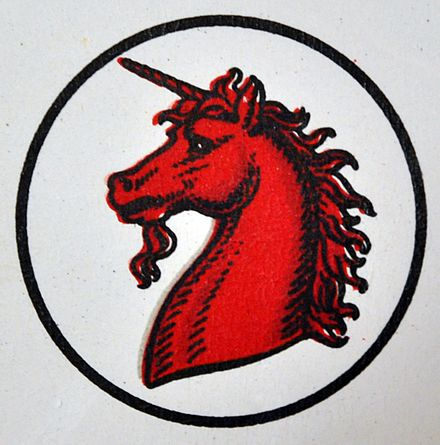
Figure 3. The Formation Sign of the 50th
Northumbrian Division.
(Image courtesy of Wikipedia)
Elliott’s company headquarters was also located at Barras Bridge and his commanding officer was Major J.E. McPherson, R.E. (T.F.).[9] One must assume that Elliott also had studied some form of engineering prior to entering the Army or he would not have received a direct commission in the R.E. (T.F.).
Harry enlisted as a Sapper in the R.E. Territorial Force, on 29 December 1914. His Regimental Number was 1740. He was commissioned in the 1st (The Newcastle) Northumbrian Field Company, Royal Engineers[10] on 14 February 1915. This company also formed part of the 50th (Northumbrian) Division. The company’s headquarters was also at Barras Bridge and the company had two majors assigned to it. Major G.C. Pollard, D.S.O., R.E.[11] was the senior officer of the company but he may not have been the Officer Commanding. His position may have been purely honorary. Major J.W. Douglas, R.E. (T.F.) appears to have been the true Officer Commanding the company.[12]
The short period between Harry’s enlistment and commissioning was probably due to the need for officers in the company and the fact that Harry had studied engineering before he enlisted.
Training
As far as training is concerned, both men appear to have studied engineering prior to joining the Army. Their military training probably took place during the drills and annual training exercises of the Northumberland Division. As they would be sent to France very soon after being commissioned, it is certain that they did not receive officer training at the School of Military Engineering at Chatham, Kent.
4. CAMPAIGN SERVICE
In early April 1915 the 50th Division was warned that it would go on overseas service and entrainment beginning on 16 April. Lieutenant Colonel J.E. McPherson replaced Lieutenant Colonel F.S. Crawford as the 50th Division C.R.E. on this date as Crawford was not to deploy to the front. By 23 April the Division had concentrated in the area of Steenvoorden (See Annex A for the division’s Order of Battle). It had arrived just as the German army had attacked at nearby Ypres, using poison gas for the first time, and was rushed into the battle. The battle of Ypres lasted from 22 April to 25 May 1915 and the field companies of the 50th Division were actively engaged in several actions that made up the overall Battle of Ypres. These actions included:[13]
Gravenstafel: 22-23 April 1915 (1st Northumbrian Field Company)
On 22 April 1915 at about 1700 hours, the German 4th Army released 168 long tons of chlorine gas on a 4-mile front between the hamlets of Langemark and Gravenstafel on the Allied line held by French Territorial and Troupes coloniales (Moroccan and Algerian troops) of the French 45th and 87th Divisions. The French troops in the path of the gas cloud suffered 2,000–3,000 casualties, with 800 to 1,400 fatalities. Troops fled in all directions. The men of the 1st Northumbrian Field Company were in close proximity to this action, although 2nd Lieutenant Harry Ernest Case was not with the company at this time.[14] No fatalities were noted for the company during this action.
Battle of St. Julien: 24 April – 4 May 1915 (1st and 2nd Northumbrian Field Companies).
In the early stages of this battle, the separate brigades and even battalions were to come under command of other divisions, the 4th, 5th , 27th and 28th British divisions and the 1st Canadian Division. The brigades were committed piecemeal to the battle with the York and Durham brigade the first to come under fire at first light on 24 April, before moving into the General Headquarters (GHQ) line. Two battalions of the brigade (1/4th Green Howards and 1/4th East Yorkshire Regiment) were the first of the division to attack the Germans, attempting to take St Julien in the afternoon, but being beaten back and returning to Potijze in the dark. The Northumbrian and Durham Light Infantry brigades were moved up to Potijze that evening. The 6th Durham Light Infantry was sent to the GHQ line, and the 8th battalion began a long trek in the rain via Zonnebeke to relieve the 8th Canadian battalion at Boetleer's Farm on the Gravenstafel ridge, arriving in the early hours of 25 April.
The Northumbrian and York and Durham Brigades were to be the Corps reserve for an attack on St Julien on 25 April. Two battalions of the York and Durham Brigade (1/5th Green Howards and 1/5th Durham Light Infantry) and the four of the Northumbrian Brigade supported the attacks of the 10th Brigade, but, due to poor communications and timing errors, gained little but casualties from artillery. The 8th Durham Light Infantry. (with a company of Monmouths and one of the Middlesex Regiment) at Boetleer's Farm, suffered almost constant shelling throughout the day, some of it from the rear from the southern end of the salient, but held on to repulse a German attack in the evening. Early the next morning the exposed position, North of the Gravenstafel—Koorsaelaere road, was flanked and the battalion suffered from machine-gun fire in enfilade, and was forced to fall back by sections, even then stopping the German advance with rifle fire, reaching a more established line and the reinforcements that had been promised earlier, late in the day. The battalion was reduced to 146 officers and men. The 6th and 7th Durham Light Infantry were used to support the 85th Brigade around Zevenkote and Zonnebeke, and were shelled throughout the day.
The Northumberland Brigade was to suffer once more from poor communications on 26 April. Concentrated around Wieltje, the brigade was designated the reserve for the 1st Canadian Division. In the morning the 5th Northumberland Fusiliers was ordered to reconnoiter and block a possible German attack from Fortuin, reaching the village, it came under artillery fire and dug in. At 1330 hours orders were received for the rest of the Brigade to attack St. Julien in cooperation with the Lahore Division and 10th Brigade, this was the first attack by a territorial brigade in the war. With only 35 minutes in which to prepare before the start of the attack, no artillery support was obtained and the routes through the wire of the GHQ line were unknown, as a result the troops were slow in leaving and presented targets for the Germans. On reaching the front line the 10th Brigade could not be found, its orders had been changed. Advancing from here the 6th N.F. took some trenches the Germans had retired from the 4th and 7th battalions were unable to leave the front line. Under artillery fire the 6th battalion dug in and withdrew during the night. The Northumberland Brigade lost 1,954 officers and men, over 2/3 of its strength, during the day.
The next few days were spent preparing the new line to which the allies were to fall back to, and alternately holding the front line, often reinforcing other units in company strength, all the while under fire. The infantry of this novice and unacclimatised division was withdrawn from the salient during the night of 2–3 May, having lost 3,764 men killed, wounded and missing since 24 April. On 5 May the 5th (Cumberland) Battalion of the Border Regiment joined the Northumbrian Brigade to reinforce it.
Battle of Frezenberg: 8-13 May 1915 (1st and 2nd Northumbrian Field Companies).
The next German attack, on the Frezenberg Ridge, began on 8 May and for the first time involved the division's artillery under the control of the other British Divisions in the area (the 4th, 27th and 28th). The Howitzers firing from positions west and north of Ypres and the field guns from south of Potijze revealed the age and limitations of the 4.7-inch guns, and 15-pounders. The infantry would be used to provide working parties, with the Durham Light Infantry Brigade (6th, 7th and 9th battalions) moving into the 2nd line trenches on 11 May astride the Menin Road, and the 5th Green Howards and the 5th Durham Light Infantry being split into companies and attached to Regular battalions near Sanctuary and Hooge Woods. None of the infantry was involved in fighting. On 12 May the division HQ was informed that it was now to be known as the 50th (Northumbrian) Division, and its infantry Brigades numbered as the 149th, 150th and 151st, and artillery Brigades 250th 251st, 252nd and 253rd. The artillery would remain attached to other divisions in action around Ypres until the end of the month.
Battle of Bellewaarde: 24-25 May 1915 (1st and 2nd Northumbrian Field Companies).
The infantry of the division continued its dispersed existence to the extent that some battalions were split into companies and attached to different battalions of other divisions in the line, even the division history admits difficulty in following them. The brigades of the division were used to reinforce the regular units in the line, (from north to south) the 149th brigade with the 4th Division around Verlorenhoek, the 151st with the 28th Division, west of Bellewaarde, and the 150th with the Cavalry Corps near Bellewaarde lake and the Menin Road.
In the early morning of 24 May the Germans launched an intense artillery and gas attack on the British lines, even those units not in the front line suffered from the gas. In some areas of 4th Division's line the German trenches were only 30 yards away, for example at Mouse Trap Farm, and surprise was gained, forcing the British back to reserve lines. Here the 5th Borderers and 5th Northumberland Fusiliers were very much distributed among 10th and 12th Brigades. The 5th Northumberland Fusiliers lost 24 dead, 90 wounded and 170 missing, while the 5th Borderers simply state in their history that they had heavy casualties to gas but difficulty in numbering them due to the dispersion. The trenches in the line held by 85th Brigade (28th Division) were in a poor state due to the weather, and here the Germans broke through the front line between the Potijze—Verlorenhoek road and the Ypres—Roulers railway. Two companies of the 9th Durham Light Infantry, attached to the 2nd East Surreys, found themselves of the north shoulder of the breakthrough, with two companies of the 7th Durham Light Infantry, attached to the 3rd Royal Fusiliers, on the southern, which was attacked again and forced back to rear lines. The 8th Durham Light Infantry (now 275 of all ranks strong) was ordered to reinforce this southern section and close the gap and after being shelled moving up through the GHQ line, succeeded in surprising the Germans and rushing 200 yards of open ground without loss to do so.
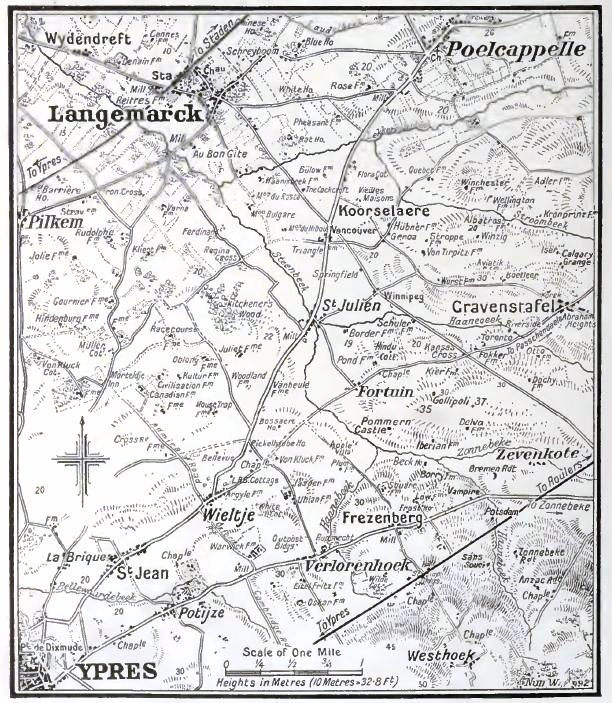
Figure 4. Map of the 50th Division’s
First Battles Showing Gravenstafel, St. Julien and Frezenberg.
(Image courtesy of Wikipedia)
Although the division’s field companies did not take part in any significant actions following Bellewaarde, there still were casualties. Following the Battle at Bellewaarde, the 50th Division was sent to a “quiet sector” of the front. In this “quiet sector” the 2nd Northumbrian Field Company lost an officer. 2nd Lieutenant George Minchin Hume was killed in action on 12 June 1915 and buried at Sanctuary Wood Hospital.[15]
During 17 and 18 July the division closed in around Armentieres. 2nd Lieutenant H.E. Case arrived in France on 21 July 1915 to join the 1st Northumbrian Field Company, so he missed the actions described above. Lieutenant E.D. Case’s Medal Index Card (M.I.C.) shows that he went to France, but it does not show the date of his arrival; however, it is likely that he arrived with the first contingent of the division on 23 April 1915. If this was the case, then Elliott Case could have taken part in the Battles of St. Julien, Frezenberg and Bellewaarde with the 2nd Northumbrian Field Company.
On 27 July 1915, six days after Harry’s arrival in France, his brother was killed. Elliott reportedly was killed by a sniper near Armentieres while his men were improving trenches in his sector. He had been at the front for only 3 months and 5 days. Lieutenant Elliott Case was buried in Cite Bonjean Military Cemetery, Section IX, Row C, Grave 8. He was 24 years old.[16]
On 14 August 1915 2nd Lieutenant Harry Case was also killed by a sniper while his men were repairing the front-line trenches near Armentieres. He had been at the front for only 25 days. He was 19 years old. Harry was also buried in Cite Bonjean Military Cemetery, Section IX, Row C, Grave 4, only four graves away from his brother.[17] Harry’s headstone is appropriately marked:[18]
THEY WERE NOT DIVIDED IN THEIR DEATH
Neither brother was killed while actively engaged in a battle. Their deaths clearly indicate the dangers presented by service in a trench warfare situation. German snipers were very well trained in the early part of the war and they presented a serious danger to Allied soldiers, especially to officers and non-commissioned officers. Artillery also presented a constant danger of injury or death. With their mission of constructing and repairing trenches, engineer soldiers were sometimes very visible to enemy observers. If an officer or sergeant could be recognized supervising a trench repair detail, he became a prime target for the sniper. This appears to be what happened to the Case brothers.
|
5. MEDALS, AWARDS AND DECORATIONS
Both brothers were awarded the 1914-15 Star, British War Medal and Victory Medal.
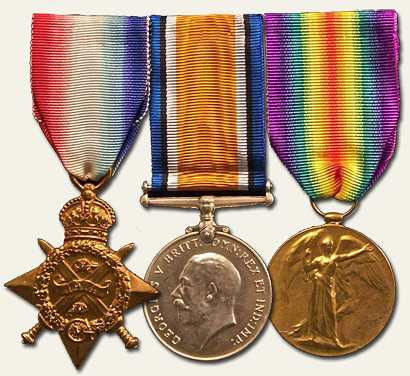
Figure 6. The Medals Awarded to Elliott and
Harry Case.
(Image from the author’s collection)
Note: These are not the actual medals awarded to either of the Case brothers. They are shown here for illustrative purposes only.
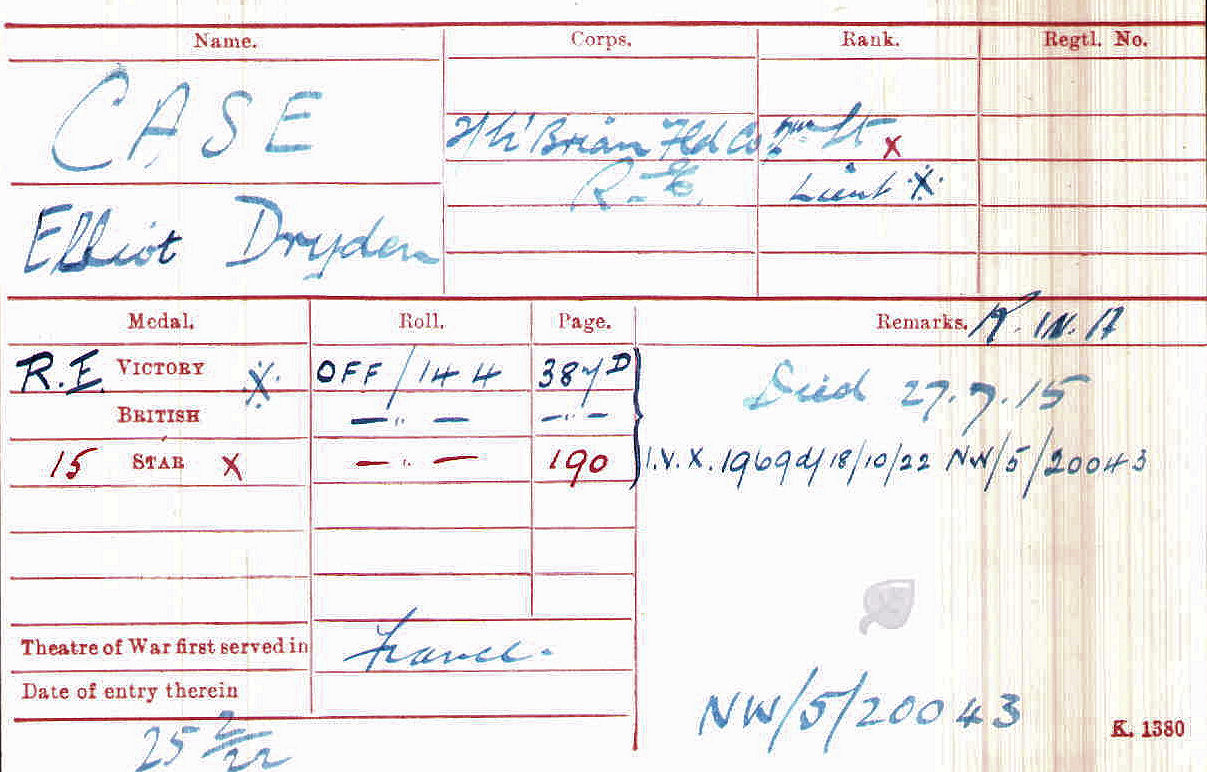
Figure 7. The Medal Index Card of Lieutenant Elliott Dryden
Case, R.E.
(Image courtesy of Ancestry.com)
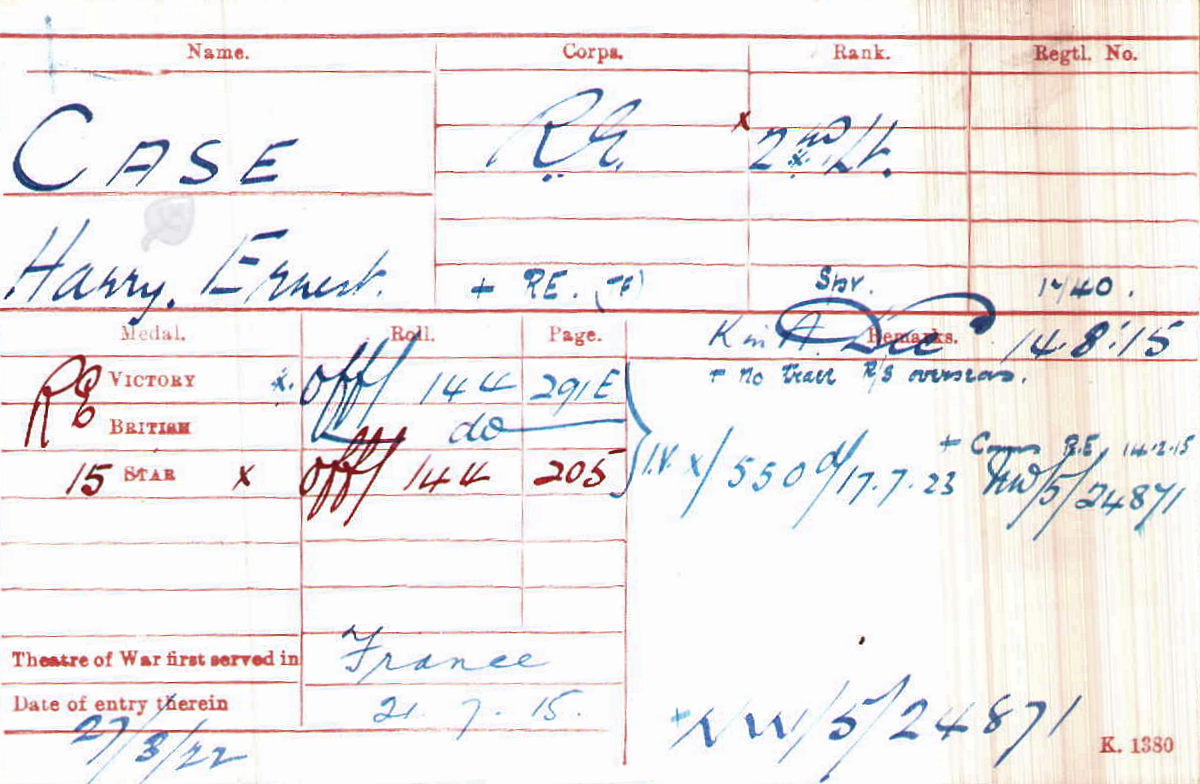
Figure 8. The Medal Index Card of 2nd
Lieutenant Harry Ernest Case, R.E.
(Image courtesy of
Ancestry.com)
In addition to these medals, a family member was presented with a Memorial Plaque to commemorate the death of each brother killed in the war. Each plaque is cast in bronze with the man’s name in the block just above the lion’s head.
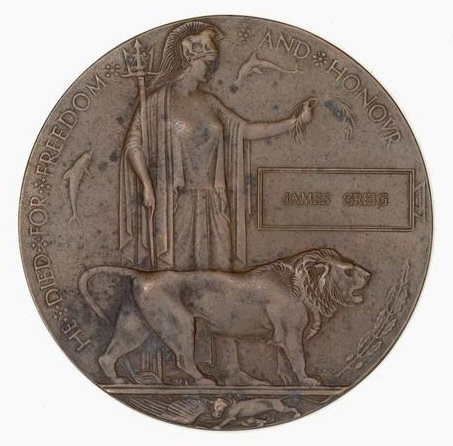
Figure 9. The Memorial Plaque.
(Image from the
author’s collection)
Note: Like the medals, this is not an actual plaque awarded to either of the Case brothers. It is shown here for illustrative purposes only.
Elliott Dryden Case’s medals were sent to Miss C.C. Case at a hotel in Whitley Bay, Northumberland on 25 February 1922. Harry Ernest Case’s medals were sent to her at 30 Tynedale Avenue in Monkseaton, Northumberland on 27 March 1922. The Case family trees do not include anyone by the name of C.C. Case, so her relationship to the brothers is not known.[19]
149th (Northumbrian) Brigade |
|
1/4th Bn, the Northumberland Fusiliers |
reduced to cadre and left 15 July 1918 |
1/5th Bn, the Northumberland Fusiliers |
reduced to cadre and left 15 July 1918 |
1/6th Bn, the Northumberland Fusiliers |
reduced to cadre and left 15 July 1918 |
1/7th Bn, the Northumberland Fusiliers |
left 10 February 1918 |
1/5th Bn, the Border Regiment |
joined May 1915, left for 151st Bde December 1915 |
149th Machine Gun Company |
formed 6 February 1916, moved to 50th Bn MGC 1 March 1918 |
149th Trench Mortar Battery |
formed 18 June 1916 |
3rd Bn, the Royal Fusiliers |
joined 15 July 1918 |
13th Bn, the Black Watch |
joined 15 July 1918 |
2nd Bn, the Royal Dublin Fusiliers |
joined 15 July 1918 |
150th (York & Durham) Brigade |
|
1/4th Bn, the East Yorkshire Regiment |
reduced to cadre and left 15 July 1918 |
1/4th Bn, the Yorkshire Regiment |
reduced to cadre and left 15 July 1918 |
1/5th Bn, the Yorkshire Regiment |
reduced to cadre and left 15 July 1918 |
1/5th Bn, the Durham Light Infantry |
left for 151st Bde 12 February 1918 |
150th Machine Gun Company |
formed 1 February 1916, moved to 50th Bn MGC 1 March 1918 |
150th Trench Mortar Battery |
formed 18 June 1916 |
2nd Bn, the Northumberland Fusiliers |
joined 16 July 1918 |
7th Bn, the Wiltshire Regiment |
joined 15 July 1918 |
2nd Bn, the Royal Munster Fusiliers |
joined 15 July 1918 |
151st (Durham Light Infantry) Brigade |
|
1/6th Bn, the Durham Light Infantry |
reduced to cadre and left 15 July 1918 |
1/7th Bn, the Durham Light Infantry |
left to become Pioneer Bn 16 November 1915 |
1/8th Bn, the Durham Light Infantry |
reduced to cadre and left 15 July 1918 |
1/9th Bn, the Durham Light Infantry |
left 12 February 1918 |
1/5th Bn, the Loyal North Lancashire Rgt |
joined 11 June 1915, left 21 December 1915 |
1/5th Bn, the Border Regiment |
joined from 149th Bde December 1915, left 12 February 1918 |
151st Machine Gun Company |
formed 6 February 1916, moved to 50th Bn MGC 1 March 1918 |
151st Trench Mortar Battery |
formed 18 June 1916 |
1/5th Bn, the Durham Light Infantry |
joined from 150th Bde 12 February 1918, reduced to cadre and left 15 July 1918 |
6th Bn, the Royal Inniskilling Fusiliers |
joined 16 July 1918 |
1st Bn, the King’s Own Yorkshire LI |
joined 15 July 1918 |
4th Bn, the King’s Royal Rifle Corps |
joined 16 July 1918 |
Divisional Troops |
|
1/7th Bn, the Durham Light Infantry |
joined as Divisional Pioneer Bn 16 November 1915, left 20 June 1918 |
245th Machine Gun Company |
joined 30 July 1917, moved to 50th Bn MGC 1 March 1918 |
50th Battalion MGC |
formed 1 March 1918 |
5th Bn, the Royal Irish Regiment |
joined as Divisional Pioneer Bn 14 July 1918 |
A number of units joined the Division on a temporary basis during the reorganization in mid-1918: 8th Border Regiment, 4th South Staffordshire Regiment and 9th Loyal North Lancashire. All had left by August 1918 |
|
Divisional Mounted Troops |
|
RHQ and A Sqn, the 1/1st Yorkshire Hussars |
left 10 May 1916 |
Northumbrian Divisional Cyclist Company |
left 20 May 1916 |
Divisional Artillery |
|
CCL (I Northumbrian) Brigade, RFA |
|
CCLI (II Northumbrian) Brigade, RFA |
|
CCLII (III Northumbrian) Brigade, RFA |
broken up 20 January 1917 |
CCLIII (IV Northumbrian) (Howitzer) Brigade, RFA |
broken up 16 November 1916 |
Northumbrian (North Riding) Heavy Battery, RGA |
a Battery of four 4.7-inch guns which left the Division to join XIII Brigade HA on 16 May 1915 |
50th Divisional Ammunition Column RFA |
|
V.50 Heavy Trench Mortar Battery, RFA |
joined July 1916, left for V/VIII Corps on 11 February 1918 |
X.50, Y.50 and Z.50 Medium Mortar Batteries, RFA |
formed 5 March 1916 from former 23, 29 and 31 TMB’s; by 1 March 1918, Z broken up and batteries reorganized to have six 6-inch weapons each |
Royal Engineers |
|
446th (1st Northumbrian) Field Company |
left December 1914, rejoined June 1915. By “normal association” this company would usually have supported the 149th (Northumbrian) Brigade. |
447th (2nd Northumbrian) Field Company |
By “normal association” this company would usually have supported the 150th (York & Durham) Brigade. |
7th Field Company |
joined June 1915. By “normal association” this company would usually have supported the 151st (Durham Light Infantry) Brigade. |
50th Divisional Signals Company |
|
Royal Army Medical Corps |
|
1st Northumbrian Field Ambulance |
|
2nd Northumbrian Field Ambulance |
left December 1914 |
3rd Northumbrian Field Ambulance |
|
2/2nd Northumbrian Field Ambulance |
joined April 1915 |
50th Sanitary Section |
left for Fourth Army 3 April 1917 |
Other Divisional Troops |
|
50th Divisional Train ASC |
retitled from the Northumbrian Divisional Transport and Supply Column, and the units also retitled as 467, 468, 469 and 470 Companies ASC |
1st Northumbrian Mobile Veterinary Section AVC |
|
50th Divisional Ambulance Workshop |
absorbed into Divisional Supply Column 3 April 1916 |
244th Divisional Employment Company |
joined 9 June 1917 |
REFERENCES:
Army Lists
Monthly Army List, November 1914, p. 829.
Monthly Army List, February 1915, p. 829.
Family Tree
Harry Ernest Case (by mpnlewis)
Civil Documents
Minutes of the Proceedings of the Institution of Civil Engineers, 1915.
Imperial War Museum
Lives of the First World War.
Internet Web Sites
The Long, Long Trail: 50th (Northumbrian) Division.
https://www.longlongtrail.co.uk/army/order-of-battle-of-divisions/50th-northumbrian-division/
Wikipedia: 50th (Northumbrian) Division.
https://en.wikipedia.org/wiki/50th_(Northumbrian)_Division
Military Documents
Medal Index Cards
Periodicals
Battle Honours of the Royal Engineers. The Royal Engineers Journal, Chatham, Kent, 1925-1932.
ENDNOTES:
[1] Case family tree.
[2] Ibid.
[3] Minutes of the Institution of Civil Engineers, 1915.
[4] Later known as the 1/2nd Northumbrian Field Company and then the 447th (Northumbrian) Field Company.
[5] Monthly Army List, February 1915.
[6] Wikipedia.
[7] Ibid.
[8] Ibid.
[9] Monthly Army List, February 1915.
[10] Later known as the 1/1st Northumbrian Field Company and then the 446th (Northumbrian) Field Company.
[11] Pollard was an Honorary Lieutenant in the Army but he was listed as a Major in the 1st Northumbrian Field Company.
[12] Monthly Army List, February 1915.
[13] Various web sites on Wikipedia.
[14] Battle Honours of the Royal Engineers credits the company with its presence at this action.
[15] Commonwealth War Graves Commission.
[16] Ibid.
[17] Ibid.
[18] Ibid.
[19] Medal Index Cards.
[20] The Long, Long Trail.